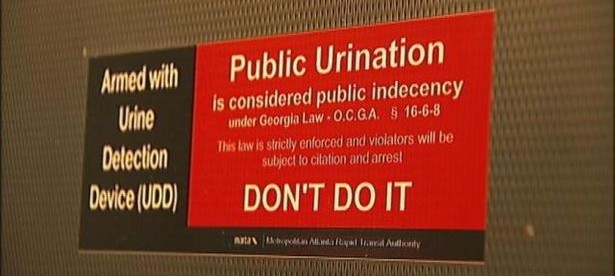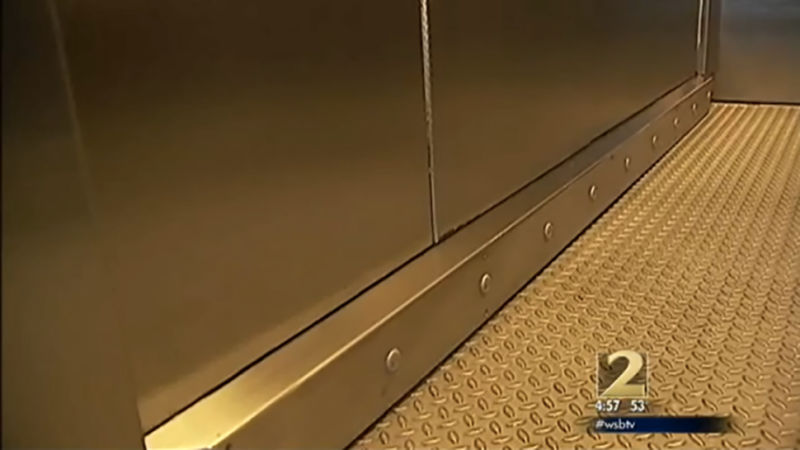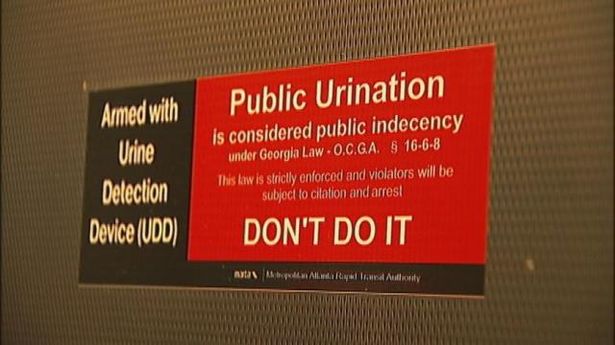Atlanta’s Fight to Separate Elevators and Restrooms

“The smell hits you so bad. You hold your breath just to hurry up and get off the elevator.”
That’s a quote from a Metropolitan Atlanta Rapid Transit Authority (MARTA) train rider named Alicia Porter from December of 2013. As she and many others told the Atlanta Constitution-Journal, it was best to avoid the Atlanta subway’s elevators unless one wanted to take a large whiff of — and this is gross — someone else’s urine. Because for some reason, relieving oneself in one of MARTA’s 111 elevators was a relatively common practice in the area.
So of course, MARTA authorities wanted to combat this foul behavior. The Authority had shut down many of the stations’ restrooms previously, finding the cost to maintain them too high relative to how often customers used them, and while re-opening some of those bathrooms was an option, it wasn’t going to be nearly enough. Atlanta needed a way to detect and deter unlawful urination in the elevators themselves.
The solution: They’re called UDD — Urine Detection Devices. And basically, they look for splashes.

The screenshot above (via Gizmodo) shows the UDD installed against the wall of one such elevator. The nine button-like extrusions near the floor are sensors, able to detect the unwanted streams from people who’d be better suited to use a urinal. “If a person relieves her or himself,” the Constitution-Journal explained, “the sensors sound the alarm and the MARTA police will be there in seconds to catch the offender in the act.” Elevators outfitted with UDDs also come with warnings, as seen below (via Consumerist), because let’s face it: it’s better to deter this particular activity than to catch someone in the act.

Atlanta didn’t originate the idea, though. Apparently, using an elevator as a restroom is an international phenomenon, with plenty of examples from Singapore as well. As Business Insider notes, UDDs are common there, and they work in basically the same way, although they go further than sounding an alarm — they close the elevator doors until the authorities can arrive. The UDDs have proven effective there, per the Orlando Sentinel, so Atlanta decided to test them as well. The test went well. Even though the December 2013 experiment involved only one elevator, Consumerist reports that “in the month since the one test UDD was put into place (along with a sign warning people about the UDD’s existence), MARTA says there has only been one incident and that elevator violator was arrested. Before the UDD, MARTA says this particular elevator was being urinated in on a daily basis.”
MARTA, according to ABC News, was so pleased with the result that they decided to roll out the pee detectors to all 111 elevators in the system — at a cost of about $10,000 each.
Bonus Fact: Not going where your are supposed to, as noted above, will get you in trouble in Singapore — so you better use a public toilet. And you best flush, as well. According to Singaporean law, “any person who has urinated or defecated in any sanitary convenience with a flushing system to which the public has access shall flush the sanitary convenience immediately after using it.” Typically, though, you won’t get fined unless you’ve violated this three or more times.
From the Archives: P-olice: To quote from the article: “To put it bluntly, if you use a public toilet in Shenzen, [China,] you better not miss.”
Take the Quiz: How well do you know Atlanta? And if that one was too easy, name the MARTA stops in the Metro Atlanta area.
Related: A Super Mario 3 version of the Atlanta MARTA system. It’s a not-gross way to mix plumbing and subways!
